The Complex Relationship Between Edward Brodess and Harriet Tubman
Edward Brodess, a Maryland slave owner, played a pivotal, albeit unintentional, role in the life of Harriet Tubman, the iconic conductor of the Underground Railroad. His actions, though likely not consciously intended to inspire rebellion, inadvertently fueled Tubman’s yearning for freedom. This article explores the complicated relationship between Brodess and the woman he unwittingly propelled toward liberation.
Brodess inherited Tubman and her mother, Rit, as property, a stark illustration of slavery’s dehumanizing nature. Like many Maryland slaveholders, he engaged in the practice of “hiring out” enslaved people, essentially renting their labor to other plantation owners. For Tubman, this meant experiencing diverse and often brutal working conditions. Each new plantation and overseer probably intensified her discontent and strengthened her resolve to escape. This constant instability likely solidified her desire for true freedom.
Edward Brodess’s death in early March 1849, proved a turning point. It became a catalyst for Tubman’s courageous escape. Amidst fears, probably whispered among the enslaved community, that the family would be broken up and sold, Tubman made the daring decision to flee north. This perilous journey, born of desperation, would transform her into a symbol of hope for countless others. It’s important to remember that the cause of Brodess’s death isn’t explicitly documented, adding another layer of complexity to the historical narrative.
Brodess’s impact on Tubman’s life underscores the intricate realities of slavery. He was a product of his time, entangled in the complex web of the slaveholding South. His story also includes family drama and legal disputes, such as a property disagreement stemming from his stepfather, Anthony Thompson’s, house. These disputes offer a glimpse into the complexities of antebellum Southern life and how even family relationships were shaped by slavery.
The story of Brodess and Tubman isn’t just a historical account; it’s a human story of resilience in the face of unimaginable adversity. It’s a story of unintended consequences and how one man’s actions shaped another’s destiny. It reminds us of the enduring power of hope and the ongoing struggle for equality and justice. While we may never fully understand Brodess’s motivations, his role in Tubman’s life is undeniable. In a tragic and ironic twist, he helped create the very force that challenged the system he upheld.
Eliza Brodess: The Widow’s Difficult Choice
After Edward Brodess’s death in 1849, his widow, Eliza, faced a dire financial situation. Crippling debts threatened her family’s security and the potential loss of their farm. With limited options available to women in her position during that era, Eliza faced a heartbreaking dilemma: sell portions of the farm or sell some of the enslaved people the family owned.
The institution of slavery, deeply ingrained in society at the time, tragically made the sale of enslaved individuals a legal, if morally reprehensible, solution to financial woes. This context is crucial for understanding Eliza’s predicament, though it doesn’t excuse the devastating human cost.
Eliza chose what she likely perceived as the lesser of two evils: selling some of the enslaved people, including members of Harriet Tubman’s family. This act, born of desperation, had far-reaching consequences, especially for Tubman. For her, the impending separation from her family became the final breaking point, igniting her escape to freedom.
Eliza’s decision, while driven by financial distress, inadvertently launched Tubman’s remarkable journey. It was a pivotal moment, not just for Tubman, but also for the broader fight against slavery. It’s impossible to know Eliza’s thoughts on the ramifications of her actions. Did she ever consider the larger implications? These questions remain open to speculation, adding to the nuances of this historical narrative. Eliza Brodess’s story, interwoven with Harriet Tubman’s, offers a sobering look at the complexities of the past and the human cost of difficult choices made in desperate times.
While we have a general understanding of Eliza’s life after Edward’s death, much remains unknown. Ongoing research may reveal new insights, potentially altering our current understanding. History is rarely simple; it demands we remain open to new information and evolving interpretations.
If you have any interest at all in Daniel Parke Custis, be sure to follow that link and read more about him! You won’t believe the story behind Eston Hemings Jefferson!
Jonathan Brodess: Unraveling Fact from Fiction
The story of Edward Brodess and Harriet Tubman often leads to questions about Brodess’s son. However, separating historical fact from embellished narratives, especially those portrayed in popular culture, is essential. The movie Harriet, for instance, introduces a character named Gideon Brodess, who relentlessly hunts down Tubman after her escape. This dramatic portrayal, while compelling, is largely fictional.
Edward Brodess’s son was actually named Jonathan, not Gideon. This seemingly minor detail is crucial for accurately representing the Brodess family and their relationship with Tubman. Confusing Jonathan with the fictional Gideon obscures the nuances of slavery in that time and place.
Unfortunately, little is known about Jonathan Brodess. Historical records about enslaved people and even slave-owning families can be incomplete. This lack of information deepens the mystery surrounding the story, highlighting the need for further research.
Some might argue that Gideon, despite being fictional, represents a broader truth about the pursuit of runaway slaves. While this perspective has merit, it’s important to avoid letting dramatic license overshadow historical accuracy. The limited information about Jonathan raises intriguing questions. Did he share his father’s views on slavery? What was his role in Tubman’s life? While definitive answers may remain elusive, these questions encourage critical thinking about the historical context.
The scarcity of information isn’t uncommon in historical research, especially concerning individuals who weren’t in positions of power. We must acknowledge these limitations and avoid presenting speculation as fact. While Harriet provides a dramatic antagonist in Gideon, the real story of Jonathan Brodess remains largely untold. This underscores the importance of continued research and a critical approach to historical sources, distinguishing between fact, fiction, and interpretation. Future research may shed more light on Jonathan Brodess and fill in some of the missing pieces of this historical puzzle.
| Fact vs. Fiction |
|—|—|
| Fact: Edward Brodess had a son named Jonathan. |
| Fiction: Edward Brodess’s son was named Gideon and relentlessly pursued Harriet Tubman. (From the movie Harriet) |
| Fact: Little is known about Jonathan Brodess’s life. |
| Importance: Separating fact from fiction provides a more accurate understanding of history and context for Harriet Tubman’s life. |
This analysis suggests that while Harriet may have taken creative liberties, it has sparked valuable conversations about slavery and the bravery of those who fought for freedom. It serves as a reminder that history is an ongoing investigation, with more to uncover.
- Unlock Water’s Symbolism: A Cross-Cultural Exploration - April 20, 2025
- Identify Black and White Snakes: Venomous or Harmless? - April 20, 2025
- Unlocking Potential: Origins High School’s NYC Story - April 20, 2025
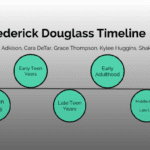
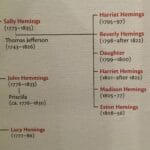
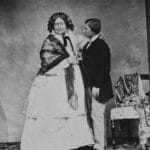

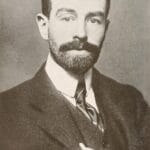
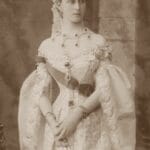









2 thoughts on “Edward Brodess: The Enslaver Who Shaped Harriet Tubman’s Destiny”
Comments are closed.